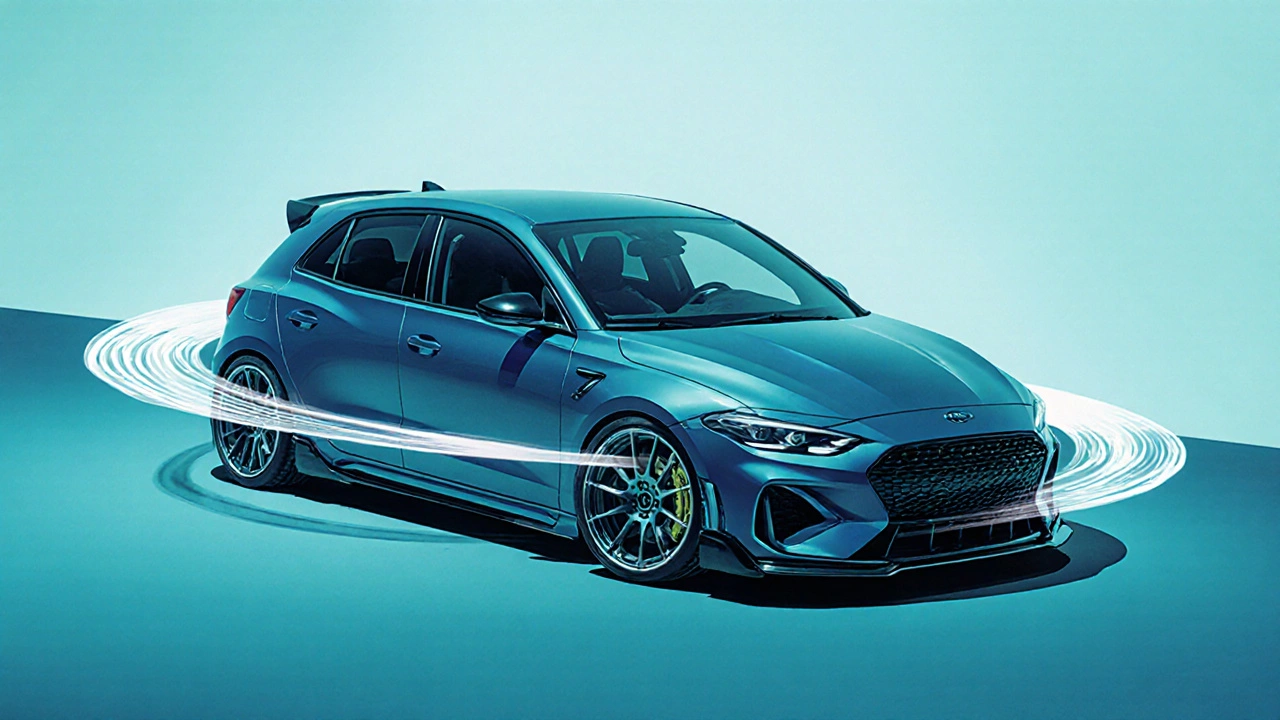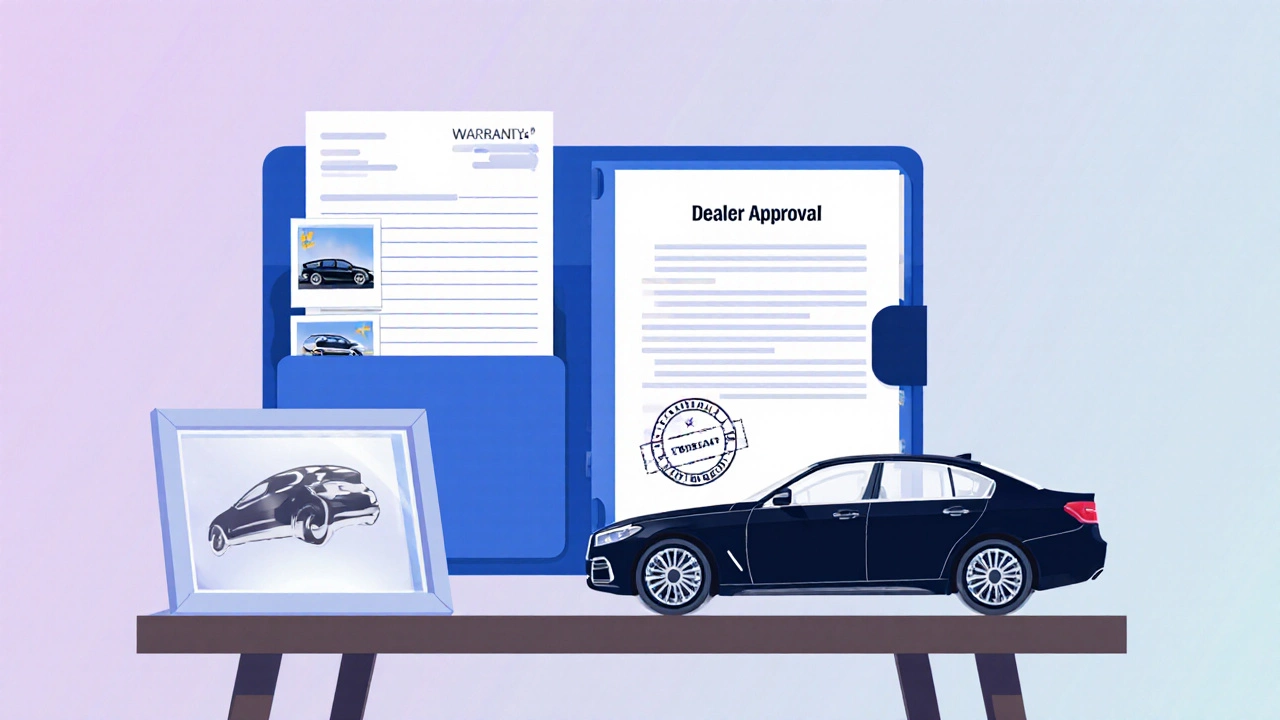Thinking about adding a fresh spoiler, new wheels, or a performance chip but scared of losing your car warranty? You’re not alone. Many owners assume any change to the vehicle will instantly void the warranty, yet the reality is far more nuanced. This guide breaks down exactly which tweaks stay safely under the warranty umbrella, what paperwork you should keep, and how to talk to your dealer so you can customize without risking coverage.
Understanding How a Warranty Works
First, let’s clear up the basics. A Car warranty is a promise from the manufacturer or dealer to repair or replace faulty components within a set period or mileage. It typically covers two layers:
- Bumper-to-bumper: Everything except normal wear and tear.
- Powertrain: Engine, transmission, and drivetrain.
Both layers are subject to a “no alteration” clause. However, the clause applies only if the modification directly caused the failure. That’s where the Aftermarket modification definition matters: it’s any part or system installed after the vehicle left the factory, whether for performance, aesthetics, or convenience.
Which Modifications Are Generally Safe
In practice, the warranty‑friendly mods fall into two buckets: purely cosmetic changes that don’t affect vehicle systems, and upgrades that are designed to be “plug‑and‑play” with no need for re‑programming the vehicle’s computer.
- OEM‑style body parts (e.g., factory‑approved grille inserts).
- Standard lighting upgrades that match OEM specifications (e.g., HID kits that use the same wiring harness).
- Wheel and tire swaps that stay within the manufacturer’s size recommendations.
- Non‑electrical interior accessories like floor mats or seat covers.
These items usually won’t trigger a warranty denial because they’re either completely isolated from the drivetrain or they use components that the manufacturer already certifies.
Body Kit Considerations
Body kits are the most popular visual upgrade, but they can be tricky. A Body kit that adds a front splitter, rear diffuser, and side skirts can change airflow around the cooling system. If you install a kit that blocks the radiator or forces more air into the engine bay, you risk overheating, which could void the powertrain warranty.
Here’s how to stay safe:
- Choose kits that are dealer‑approved or come from reputable brands that publish wind‑tunnel testing data.
- Ensure the kit uses the same mounting points as the factory panels - no drilling or permanent modifications.
- Keep the original parts in case the dealer requests a revert during a warranty claim.
If you follow these guidelines, the body kit is treated as a cosmetic accessory, and the warranty remains intact.
Suspension, Wheels, and Tires
Changing the ride height or swapping to larger wheels can affect alignment and load on suspension components. A Suspension kit that includes adjustable coilovers is often considered a performance part, and the dealer may ask for proof that it’s installed correctly before honoring a claim related to handling or steering.
Best practice:
- Stick to the wheel size range listed in the owner’s manual (usually +/- 2 inches).
- Use tires with the same load index and speed rating.
- Have the installation performed by a certified shop that provides a detailed receipt.
When you stay within the manufacturer’s specs, the warranty remains untouched, even if you install a more aggressive spring or a set of lightweight alloy wheels.

Lighting and Electrical Upgrades
Modern cars rely heavily on electronic control modules (ECMs) to manage everything from headlights to climate control. A Lighting upgrade that replaces halogen bulbs with LEDs using the original harness is usually safe. However, a DIY wiring harness that taps into the CAN bus can be a red flag.
To keep the warranty clean:
- Buy LED or HID kits specifically marketed for your vehicle’s make and model.
- Avoid cutting or splicing factory wiring - use plug‑in adapters.
- Document the installation with photos and a copy of the product warranty.
Dealers respect upgrades that don’t require software re‑calibration. If a modification does need a coding change, ask the dealer to perform it so it’s logged in the service history.
Engine and Performance Modifications
Performance parts are where the warranty battle usually heats up. A simple cold air intake or a cat‑back exhaust that doesn’t interfere with emission sensors can be tolerated, but anything that rewrites engine maps (e.g., ECU tune) is likely to be deemed a cause of failure.
What’s generally accepted:
- Cold air intake - as long as it includes the factory O₂ sensor.
- Cat‑back exhaust - no catalyst removal, just a muffler swap.
- Performance chips that are “plug‑and‑play” and do not modify the ECU code.
Anything that alters the combustion process (turbo boost changes, fuel mapping, or exhaust gas recirculation removal) can void the powertrain warranty. If you’re unsure, request a written statement from the dealer stating that the part is warranty‑compatible before you install it.
How to Protect Your Warranty When Modding
The smartest move is paperwork. Keep a dedicated folder (digital or paper) that includes:
- Receipts with part numbers and manufacturer’s warranty.
- Installation invoices that show the installer’s name, date, and any certifications.
- Before‑and‑after photos of the vehicle.
- Correspondence with the dealer confirming that the modification won’t affect coverage.
When a claim arises, present this file. Most dealers will verify the modification didn’t cause the issue before denying a claim.

Quick Reference Checklist
| Modification Type | Typical Warranty Impact | Documentation Needed |
|---|---|---|
| OEM‑style body kit | None if no structural changes | Dealer approval, original parts retained |
| Standard LED headlights | None if plug‑in | Product warranty, installation receipt |
| Aftermarket wheels (within size range) | None if load rating matches | Fitment certification, tire specs |
| Cold air intake | None if O₂ sensor retained | Part spec sheet, installer receipt |
| ECU tune / performance chip | Potential void of powertrain | Dealer‑signed statement |
Frequently Asked Questions
Will installing a spoiler automatically void my warranty?
Not if the spoiler is an OEM‑style, bolt‑on unit that uses the factory mounting points and doesn’t interfere with cooling or sensor systems. Keep the original spoiler in case the dealer asks for it.
Can I upgrade to a larger wheel without affecting the warranty?
Yes, as long as the new wheels stay within the size and load specifications listed in the owner’s manual and you retain the original wheel bolts or lug nuts.
Do performance chips that claim “no ECU flash” count as a modification?
If the chip plugs into a pre‑existing port and does not rewrite the ECU code, many manufacturers consider it a harmless accessory. Still, ask the dealer for written confirmation.
What paperwork should I keep after a modification?
Save the purchase receipt, the installer’s invoice, any product warranty sheets, before‑and‑after photos, and any email or written note from the dealer stating the mod won’t affect coverage.
If a modified part fails, will the entire warranty be void?
Only the component directly linked to the failure is denied coverage. The rest of the warranty remains valid, provided the failure wasn’t caused by the modification.
Next Steps & Troubleshooting
If you’ve already installed a questionable part and a warranty claim gets denied, you have a few options:
- Request a detailed denial letter that cites the exact reason.
- Show the dealer the dealer‑approved paperwork proving the part is compatible.
- Consider reinstating the original OEM component and re‑submit the claim.
Most manufacturers have a “reasonable use” clause, so a well‑documented, non‑damage‑inducing mod often survives a claim review.
Bottom line: you can still personalize your ride without sacrificing protection. Stick to OEM‑approved, plug‑and‑play accessories, document everything, and keep communication open with your dealer. That way, you enjoy the look and performance you want, and the warranty stays solid.




